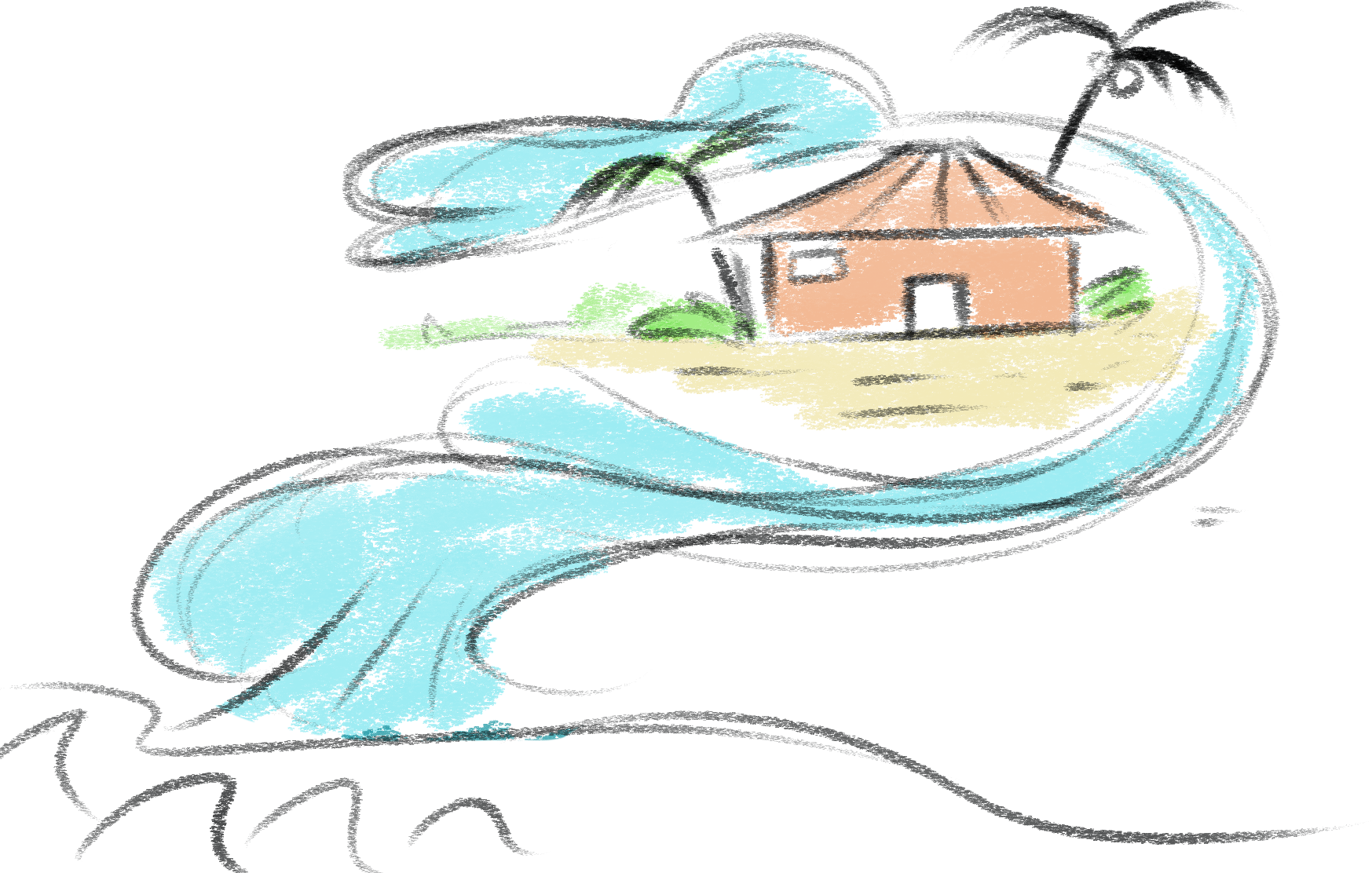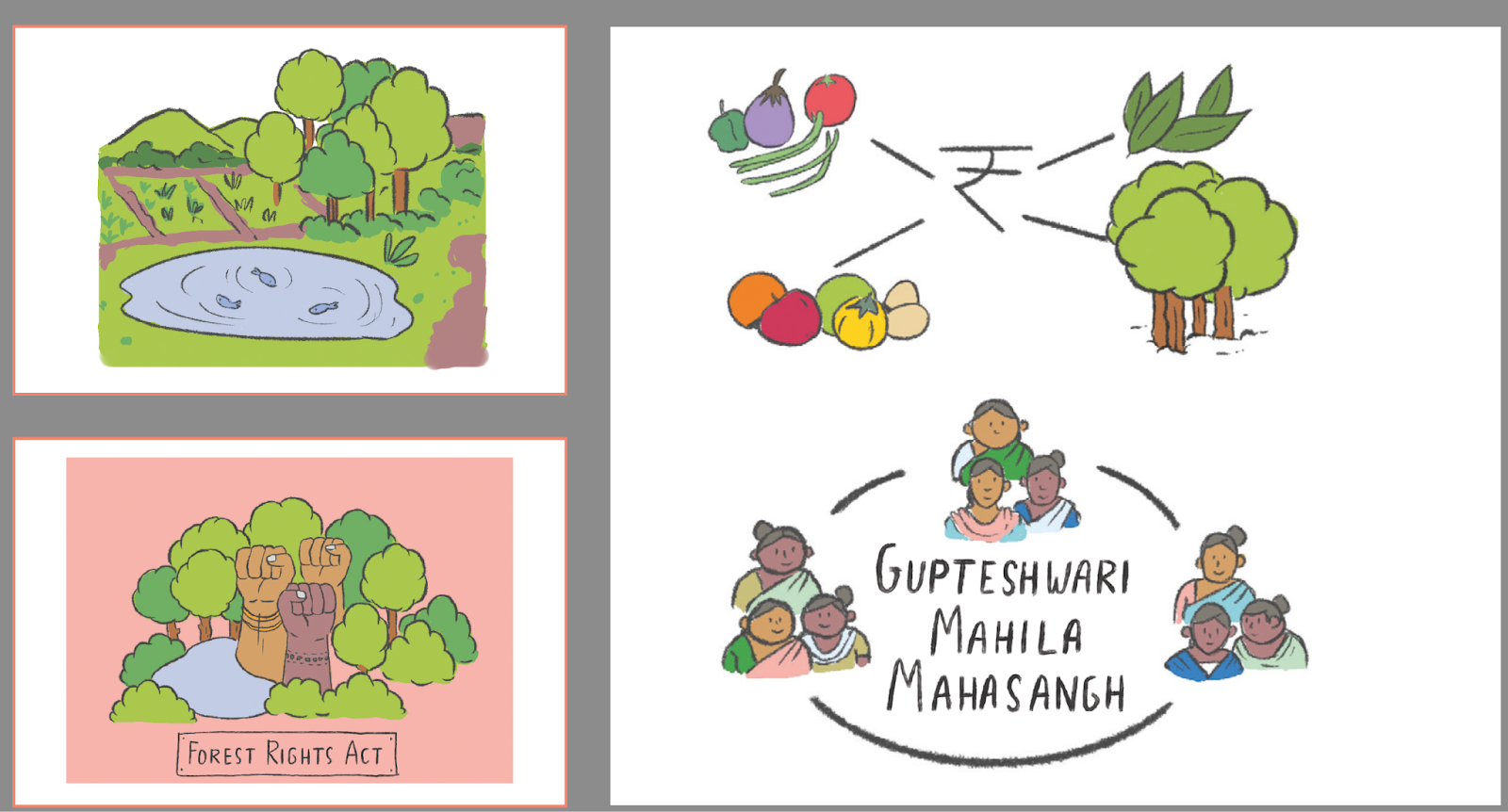Crafting Local Climate Change Stories to Spark Global Action
Anurag Srivastava
Heatmap showing Delhi temperatures during April in 2024 vs 2025 (Source: AccuWeather; map generated by Anurag Srivastava).
Delhi has already experienced multiple heat waves this year and it is only May. Temperatures have exceeded 40°C for more than 12 days so far, which has resulted in an increase of 1.8°C in the average maximum temperature and 0.73°C in the average minimum temperature, making this past month one of the warmest Aprils in the last three years.
We all have seen these kinds of alarming news articles with data that instill fear, confusion and despair. This often alienates people, making them emotionally numb and doubtful of any impactful solution. But what if we told the story differently? What if we shared our lived experiences to complement data-heavy headlines? What if we focused our attention on the impacts that precede catastrophic storms and rises in temperature? In these humanized stories, we may find a connection to our neighbors and to those across the globe.
For example, let's consider a different way to portray temperature data. Dr. Ajay Nagpure, a climate scientist at Princeton, captured the image (see right) on one of his field trips in India for his research on extreme heat and social inequality in the Global South.
This image is a completely different way to visualize temperature data. It is a stark contrast to the heatmap because it integrates a woman’s relationship with these temperatures into the data and story seamlessly. The image alone can weave data and real impact together into a more relatable climate change story that captures attention and does not numb its audience with statistics. Ajay’s reflection on the photo further strengthens its power and is a testament to the impact of human-centered stories.
A Collective of Climate Stories
I set out to share more stories like this in an article where I interviewed four science communicators with lived experiences from six countries. Each one showcased not only how the weather patterns, seasons, and temperatures were changing, but they also illustrated the nuanced and delicate relationships one has with nature.
Encouraged by those stories and impressions, I was inspired to bring this call to action—to tell better climate stories— to a larger audience through the second webinar in our series, Art X Science Conversations, co-organized by ECOS and The Experimentalist.
Our webinar invited climate advocates, artists, scientists and science communicators to discuss climate observations, ways to integrate them into engaging stories and assemble our insights into accessible resources for a wider audience. Participants from around the world joined to talk about climate change in their neighborhoods. Their personal observations painted pictures of everything from seasonal storm shifts in Sri Lanka to the infestation of a pathogenic bacterium, Xylella fastidiosa, in Italy, destroying olive trees.
1. Changing Rainfall Cycles in the Tropics
Anjleen Hannak, a marine scientist and certified scientific diver, got her first taste of marine life and witnessed coral reefs at the young age of 10 when she dove for the first time off the coast of East Timor. Since then, she has explored the vast marine life in Australia, the Philippines, the Maldives, Indonesia and Sri Lanka. Anjleen’s love for marine life motivated her to start working on the topic during high school on the west coast of Colombo, Sri Lanka.
Anjleen’s diving experience at a particular shipwreck site over a decade showcases their potential as artificial reefs in Colombo, Sri Lanka. (Source: Anjleen Hannak)
In Colombo, Anjleen observed coral reefs impacted by human activities, but it was the shipwrecks around the coastal area that caught her attention. She studied their function as artificial reefs in high school and returned to Sri Lanka almost a decade later to answer this research question in her master’s thesis. This time, she worked on both the east and west coasts of Sri Lanka and found a stark difference in coral health. Passikudah, on the east coast, is less affected by anthropogenic impacts and hence has a strong, healthy reef cover, whereas the west coast is characterized by reefs affected by increased human activities. With her research work in Colombo, she and her team were able to report high concentrations of fish communities inhabiting shipwrecks as a safe haven and marine habitat.
A school of snapper fish swimming in the shelter of a shipwreck (Source: Anjleen Hannak).
Reflecting on her vast experience of living and working in South East Asian countries, Anjleen recounted how the weather has changed over the past decade and what that means for the corals.
“Monsoon patterns have become increasingly irregular, leading to unseasonally warm temperatures at unexpected times. When the monsoon arrives earlier than usual, it causes heavy rainfall that brings rich nutrients and sediments to the sea water, which smothers the coral. The sediments increase particulate matter in the water, blocking the sunlight from penetrating the water which in turn limits photosynthesis. This ‘monsoon madness’ has also contributed to increasing land and sea temperatures, allowing the atmosphere to hold more moisture for longer and causing more frequent and intense floods. Those floods are becoming dangerously normalized,” shares Anjleen
2. Recycling and Reusability as a Way of Life
Elena Poritskaia, who grew up in Russia and later went to study and work in Spain, shared how exposure to different cultures can change habits. While living in Spain, Elena got used to recycling practices, and when she moved back to Russia, she implemented them in her household.
“In my family, we have a ‘reuse and repurpose policy,’” she says. “We try to consume less, buy used items from other people, turn our used clothing into something else (my mom knows how to sew) and reuse plastic bags as much as we can to avoid throwing them out because this type of plastic is not easy to recycle. We collect cardboard boxes for future use, save glass and plastic bottles and compost for our garden so the organic waste returns to the earth as fertilizer.”
Reused plastic items from Elena’s home (Source: Elena Poritskaia)
While recycling may not be ingrained in Russia’s culture, reusing has been present since the early nineties. “In the Soviet Union, there were no plastic bags until the early 1990s, and they were a simple but very impactful technology that were considered a luxury at the time,” she says. “Most people collected and reused them many times. Now, plastic bags are no longer rare, but many households still have ‘the bag with the bags’ in their kitchens — a huge plastic bag filled with smaller plastic bags for reuse. This tradition has now turned into a meme, and people make jokes about saving bags. But I see great purpose in it. By saving and reusing plastic, we try to minimize waste and do less harm to our planet.”
3. La Silampa: A Panamanian Folk Story
Another approach to climate change storytelling was presented by Ian Cooke Tapia. He talked about a shift in the weather patterns through the lens of Latin American folklore.
La Silampa as illustrated by Ian Cooke Tapia
“While growing up in Panama, I remember summers would be warm,” he says. “But suddenly, between 12 and 1 pm, it would become significantly cooler as the wind would go still and colder air from the sea moved in. We call this 'La Silampa,' a pocket of cold air that would drop the temperature by 5 to 10° C, depending on local conditions. The origin of the term 'La Silampa' is from folklore,” he continues. “It is said that a ghostly presence moves through the land late at night. When ‘La Silampa’ passes by, the temperature suddenly drops, and the air feels unnaturally cold and heavy. In the old stories, it was believed that if you found yourself surrounded by this sudden chill and mist, you were in the presence of the spirit, a reminder to respect nature and tread carefully in the dark.”
Ian moved to Wales in 2013 but still frequently visits home in Panama. During his recent visit in the summer, he fondly waited for La Silampa but it didn’t hapen. He wondered whether it was due to climate change or if he had simply gotten used to the cold weather from Wales. He ended his story with a quote that summarizes his doubts about his own perceptions.
“Anecdotal evidence is always problematic. People’s memories are biased and span relatively short periods. That doesn’t mean people can’t pick out real trends, but sometimes the data just doesn’t support the impression.” - Steven Paton, Director, Physical Monitoring Program at the Smithsonian in Panama.
This leaves us with a deeper dichotomy: data versus stories. While we as scientists and science communicators view data as sacrosanct, human stories bring emotion and inspire people to care more about the climate and our planet. If we focus only on data, we risk losing the old folklore and narratives that were created to protect nature in the first place. If we focus too much on personal anecdotes, we may not be tracking real trends accurately. How do we find the right balance?
4. Lost in Translation
Ankita Bhatkhande works on helping local communities in India understand the changing climate and open doors to their local policy makers to demand better strategies and facilities, but efforts to educate are not effective when you aren’t speaking the same language.
“My grouse, and yes, I’ll use that word, is with the way climate is communicated, especially in the Global South. I come from that context, and I’ve been deeply unsettled and disappointed by the framing of climate issues. Even today, in the country I live in, much of the discourse revolves around greenhouse gas emissions, carbon footprints and technical terms. These are not relatable to large sections of the population, especially those most directly affected by the climate crisis,” explains Ankita.
What Ankita points out is a very genuine concern, as most climate scientists and policy makers speak in inaccessible jargon and data. We need to simplify these scientific concepts and meet people at the level of their understanding. To elaborate on this, Ankita shared her experience working with women on climate change in Orissa, India.
Illustrations representing climate change actions by women in Orissa (Source: Rooted in Power).
“When we asked the locals if they could perceive climate change in their geography, the response was shocking: most said they didn’t even have a word for ‘climate change’ in their local language,” she says. “Yet the women could explain how they experienced it. They shared that the first rainfall, once expected in June, now often arrives in July, August or even later, disrupting agriculture, seasonal festivals and their cultural rhythm. Many festivals are tied to sowing seasons or the first harvest, but now these rituals are shifting because they no longer know when to expect the rain. The impact goes beyond festivals,” she continues.
“Women spoke about gathering indigenous mushrooms and non-timber forest products, once vital for their diets and livelihoods, that are now disappearing under climate stress. As a result, their diets are changing too. They’ve begun eating store-bought potatoes, a crop that is neither native, nor nutritious or sustainable, creating a huge shift with serious consequences for women's nutrition and health.”
This story shares a major insight in communicating climate change: translation is not the same as localization. Simply translating a word doesn’t make it relevant or meaningful to the people whose lives are affected. To tell better climate change stories, we must move away from the hegemonic narratives of scientific institutions and policymakers and share more human-centric stories. These stories must focus on the necessities of human life, like food, shelter and survival, while also translating the science into accessible and relevant terms, otherwise the climate change narrative is lost in translation.
5. Who is the Real Perpetrator?
When we step back and really listen to these stories, the seriousness of climate change becomes hard to ignore. Another storyteller, Santiago Gisler, raised genuine points about the solutions we are implementing and whether those responsible for the climate crisis are actually on board.
"Present climate change and climate problems are extremely important from a scientific point of view, but they also cross borders,” he says. “Climate change consequences impact economic, political, cultural and social aspects, so our solutions must overlap those areas as well to make a radical and lasting change."
Santiago also addressed the fact that most people paying attention to these stories already care about the climate. Are we preaching to the choir? And if we are, are we sharing the right message?
Schematic highlighting the largest culprits of carbon emissions (Source: Carbon Visuals at flicker CC BY 2.0)
“Because we, as individuals, are reaching out to other like-minded individuals, we may be stuck in a climate change echo chamber unable to reach audiences that really need to hear these stories,” he says. “Additionally, if we continue to place the responsibility on the individual, as is common in these narratives, we are targeting the part of the population that contributes to only about 10 to 30% of global emissions.
The real drivers of climate change are companies and industries like agriculture and all others that rely on the fossil fuel industry. And of these, only 100 companies are responsible for about 70% of global emissions. We’re not just dealing with climate change at an individual or consumer level, it’s much bigger, and we as science communicators have the responsibility to call out the real culprits. These are the kinds of hard truths that can create an impact when told in different kinds of climate change stories."
Santiago wrote an article titled The Elephant in the Climate Room? Your Reusable Cup Is a Distraction!, where he calls out big companies and a big oversight in common climate narratives.
And Santiago is not wrong. Most governments are tied up with big companies, adding to the elephant in the room. Their nonchalance attitude toward the current climate crisis becomes clear, when we see that ahead of COP30, which will be held in Brazil later this year, the Brazilian government is currently destroying parts of the Amazon forest to build a new highway and expand the capacity of the airport for a conference that is supposed to strategize on protecting the planet.
What Can We Do as Science Communicators?
One thing we learned from these experiences is that we need to reimagine how we talk about climate. We must balance facts with human-centered storytelling to create stories that have the power to spark empathy, shift perspectives and drive meaningful action. As Ankita mentioned, “We need new lenses, new metaphors and new mediums. Because if we’re not communicating in ways that people at the grassroots understand, then we’re not communicating at all.”
Will you join us in this narrative shift about climate, action, and the balance of art and science? We hope this article inspires you to notice changes around you, bring them into your conversations with friends and family and share your stories with wider audiences or your local policy makers. We hope it also equips you with the tools you need to drive change in your community. Maybe it encourages you to participate in climate welfare initiatives, volunteer with organizations addressing climate-related issues, or take a climate change storytelling workshop. You tell us! What is your climate story?
Get caught up with our current Art x Science Conversations by listening to the podcast on Spotify and join the ECOS and The Experimentalist mailing lists to get updates on opportunities to participate in future webinars.
This article is produced in collaboration with ECOS.







